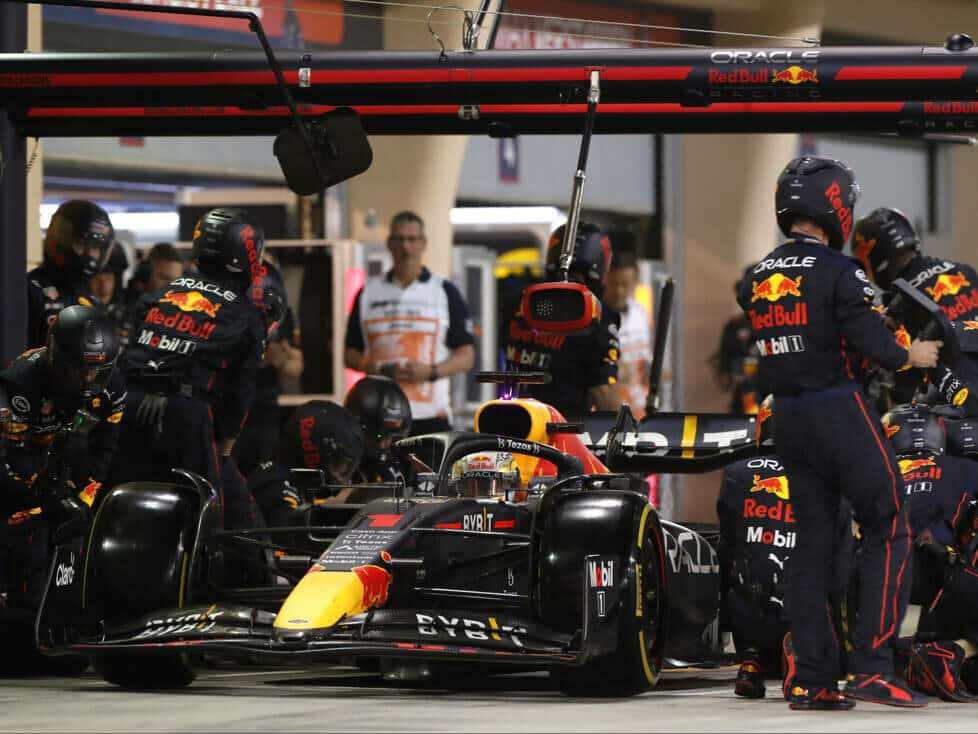Max Verstappen and team boss Christian Horner give their views on Red Bull’s three big problems at the Bahrain Grand Prix and explain the causes
Max Verstappen admits his Red Bull Formula One team had “quite a few problems” to solve after the frustrating race in Bahrain. Nevertheless, the world champion is confident that they have found the solutions.
Red Bull team boss Christian Horner admits they had to solve three unrelated major problems, giving the team “a busy few days” to make the car reliable for Saudi Arabia. Last weekend in Bahrain, the team had difficulties with the fuel system, brake cooling and front suspension.
Early in the race, Verstappen as well as teammate Sergio Perez were instructed to cool their brakes before retiring shortly before the end with a fuel system failure. In addition, Verstappen suffered a steering problem immediately after his third and final pit stop, which was triggered when the car was lowered off the jack during a tyre change.
Verstappen: Better reliability problems than a slow car
When asked about the problems, Verstappen is optimistic as they are “just little things” that need to be fixed. For him, the positive aspect outweighs the fact that the car is fast enough. “The problems we had are easier to solve than having a car that is not competitive,” said the Dutchman.
Red Bull’s braking problems surfaced during the weekend in Bahrain, especially at stages when the drivers were driving in traffic. Before the race, the team had changed the rear brakes on both cars as a preventative measure, but it was the front brakes that were the problem in the race.
“During testing, the brakes were already getting hot, so we made changes. We thought it would be just enough for the race, but when you are fighting and close to another car, of course they get warmer. That’s why I had to take my foot off the gas so often,” explained Verstappen.
Brake problems only in turbulent air
He admits he had to drop back after his third attack on Charles Leclerc because the brakes were “literally on fire”. “It wouldn’t have done any good to keep trying because I had no brakes left. Hopefully we can solve it this weekend because it costs lap time,” added the world champion.
Horner confirms that the brakes suffer especially when driving in traffic, “but it’s difficult to follow a car in front for 20 laps at a time in winter testing”. On top of that, the RB18 didn’t have any difficulties with brake temperature when driving freely.
“When driving in the swirling air, the temperature in the front brake disc increased exponentially, so we had to ask both drivers to manage the brakes,” explained the Red Bull team boss.
Vacuum in the tank led to failures
For Verstappen, the problem with the steering was compounded after the third pit stop. “It was definitely not comfortable to drive, especially with Carlos [Sainz] behind me on the restart. I wasn’t sure how the car would behave with the balance,” he said.
According to Horner, the cause of the steering problem was an “internal suspension component” that had nothing to do with the actual steering, but “contaminated” it. Moreover, this problem increased when the car was lowered in the pit lane.
The Red Bull team’s third problem was the fuel system, which ultimately forced both cars to retire. It created a vacuum as the amount of fuel dropped, which was caused by “a perfect storm” of temperature and pressure in the tank.
Fuel supply problem “totally unexpected “
According to Horner, one role in this could be the newly introduced E10 fuel, which is “more volatile”. “I think it has created a vacuum in the tank. You can get air in the system and the pump wasn’t able to take the fuel you needed,” he explains.
After the Bahrain race, he says, they did a lot of R&D testing on this, which Red Bull believes replicates the problem and solves it. There was no warning during testing and the race weekend, according to Horner.
“We ran on a lot of fuel, little fuel, medium fuel and did a lot of laps in testing. So it was very strange because it was completely unforeseen. Now we’ve put some things in place that hopefully will help eradicate the problem,” says Horner.





